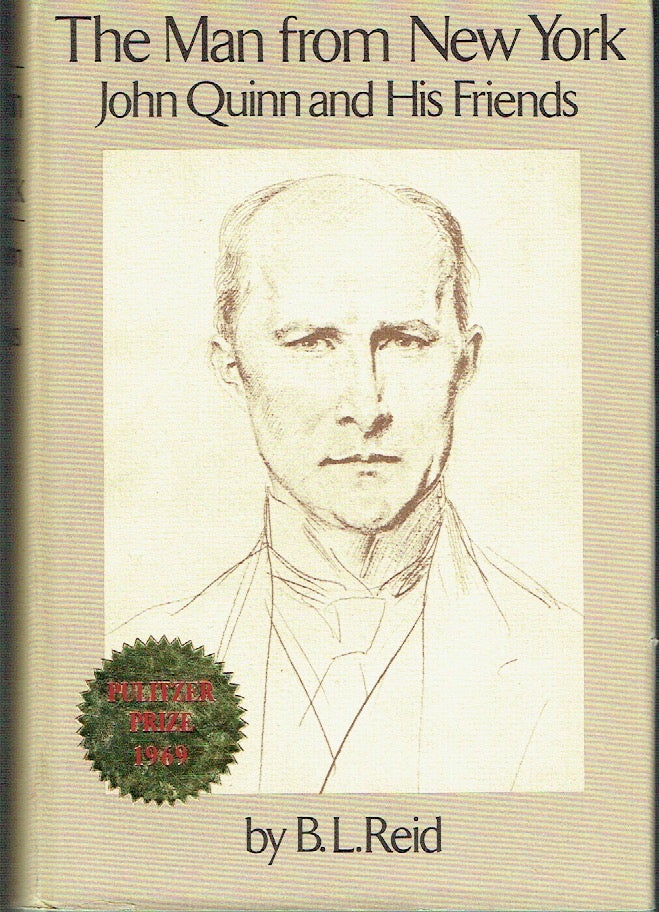Hardcover, 708 pages
English language
Published 1968 by Oxford University Press.

Hardcover, 708 pages
English language
Published 1968 by Oxford University Press.
When John Quinn descended on London and Dublin in the summer of 1902, J. B. Yeats, the poet's father, prophetically called him "the nearest approach to an angel in my experience." Quinn was a New York lawyer, of Irish-American background, of professional eminence and unspecified fortune, who became the "friend" or "patron" or "collector" of an astonishing variety of artists and writers of the early years of this century It is difficult to think of anyone who mattered in the arts of Quinn's time to whom his good will did not make a significant difference.
Through the Yeatses he eventually met Augustus and Gwen John, Ezra Pound, John Synge, James Stephens, Padraic Colum, George Russell (AE), Standish O'Grady, Douglas Hyde, Sir Horace Plunkett, Sir Shane Leslie, Roger Casement, Maud Gonne, and of course Lady Gregory. Through Pound he heard of James Joyce, whom he helped for years; he was the …
When John Quinn descended on London and Dublin in the summer of 1902, J. B. Yeats, the poet's father, prophetically called him "the nearest approach to an angel in my experience." Quinn was a New York lawyer, of Irish-American background, of professional eminence and unspecified fortune, who became the "friend" or "patron" or "collector" of an astonishing variety of artists and writers of the early years of this century It is difficult to think of anyone who mattered in the arts of Quinn's time to whom his good will did not make a significant difference.
Through the Yeatses he eventually met Augustus and Gwen John, Ezra Pound, John Synge, James Stephens, Padraic Colum, George Russell (AE), Standish O'Grady, Douglas Hyde, Sir Horace Plunkett, Sir Shane Leslie, Roger Casement, Maud Gonne, and of course Lady Gregory. Through Pound he heard of James Joyce, whom he helped for years; he was the lawyer for the defense of the Little Review in the Ulysses controversy.
Early in his life Quinn determined to be a cultivated man as well as a specialist in financial law He managed to combine a fantastically crowded legal career with a full-time career as an amateur of the arts, letters, and politics. His ebullience and intelligence drew people to him and held them.
Conrad and Eliot benefited from Quinn's friendship as well as Pound and Joyce; and, as his artistic taste became more daring and more refined, French artists came to know the "noble buyer." Picasso, Matisse, Brancusi, Gauguin, Braque, Derain, Dufy, Segonzac, Marie Laurencin, Pascin, Rouault, Villon, Duchamp, and Rousseau were among these; and he helped organize the great Armory Show in 1913.
Intrigued by the way Quinn's name kept cropping up in situations involving important people, Professor Reid, in his own words, "went to work and quickly uncovered his large, rich correspondence," with its abundance of intimate views of all these people, and of others in the arts and in public affairs during the twenty years before his death in 1924. Most of these lively and meaty letters are unpublished and unknown; they were the author's main resource in putting together the story of Quinn's life and friendships. It is a success story, "very Irish and very American…accompanied by crises and disasters, various, imposing, funny, and sad." It recovers for posterity a most ubiquitous yet mysterious figure in the modern artistic and literary worlds, and it will also find an immediate place as the definitive account of a man who, within the limits of his own earned income, was the bravest and most serviceable patron of modernism of his time, and probably the greatest collector of modern art.